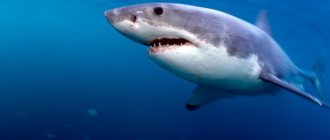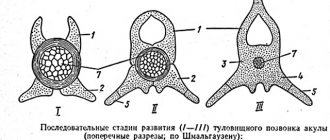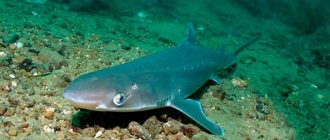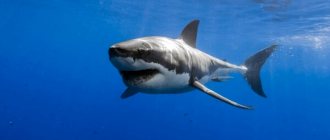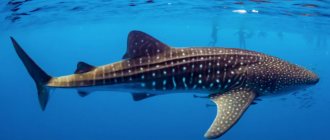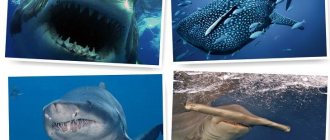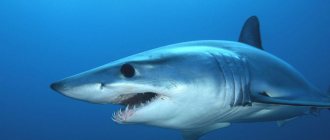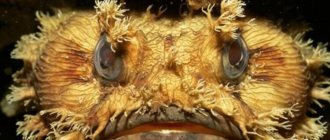The world's oceans are a special world, living according to their own cruel rules that have been formed over millennia, and for non-compliance with which it is easy to pay with your life.
Sea inhabitants adapt and adapt to changes, sometimes not noticing that another creature is claiming their habitat - Man.
And a conflict arises - merciless and endless, with huge losses on both sides of the barricades.
Sharks are omnipotent and incomprehensible to many, lords of the expanses of water, repeatedly making it clear to Man that the ocean is their element, their home, their kitchen.
And wanton attacks in coastal areas of beaches, in places chosen by people for recreation and entertainment, only emphasize that the Man at Sea is only a temporary phenomenon.
Gentle waves rolling onto the sandy shore and blue expanses of water attract travelers from all over the world - divers, surfers, fishermen, just vacationers - mothers, fathers, children, youth. But sometimes trouble awaits them there.
Shark attacks are not uncommon, sometimes they are provoked by people themselves, sometimes there is no explanation for them.
Every year, cases of causeless shark attacks are recorded in different places of the World Ocean, which often end disastrously for representatives of the human race.
And there are also places where attacks are systematic and surprising in their scale.
What places on Earth can be considered the most dangerous in terms of the risk of possible shark attacks?
Predators hunt off the coasts of Florida, California and Hawaii
The beaches of Florida (US state) are considered the most dangerous in the world: shark attacks are most common here. But at the same time, according to statistics, not a single vacationer who encountered a predator in the ocean died: people are attacked by young, blunt-nosed sharks. They won't eat you, but they will seriously injure you.
Off the coast of California there are many sea lions, which are the food of sharks. Predators sometimes confuse humans with their usual prey. You understand what this leads to...
In Hawaii, 15 people have recently died as a result of shark attacks. The most dangerous species hunt here - white and tiger sharks. Most often, attacks occur off the island of Maui. Be careful!
Excretory system and water-salt metabolism of fish
The excretory system serves to remove metabolic products and ensure the water-salt composition of the body. The main excretory organs in fish are paired trunk kidneys with their excretory ducts - ureters, through which urine enters the bladder. To some extent, the skin, gills and intestines participate in excretion.
Kidneys
They are a system of excretory tubules that open into the common excretory duct.
The evolution of the excretory system in vertebrates occurs in a sequential change of three types of kidneys: the adrenal, trunk and pelvic.
Pre-kidney, or head kidney (pronephros),
develops during embryogenesis in lower vertebrates (cyclostomes, fish, amphibians).
In adulthood, they have a functioning primary, or trunk, kidney (mesonephros).
In higher vertebrates (amniotes), the trunk kidney functions during embryogenesis, and in adults, the secondary or
pelvic kidney (metanephros) functions.
The progressive development of the kidneys is associated with the complication of the structure of the renal tubules and the reduction of the ciliated infundibulum.
The most primitive is the head kidney, which is formed in the front part of the body cavity in the form of 6-7 excretory tubules.
Its main filtration element is a funnel, which at one end opens into the body cavity, and at the other end into the excretory duct - the ureter. The choroid glomerulus is adjacent to the upper part of the funnel. Such a kidney functions in cyclostomes and fish in the early stages of development. In some fish it remains in the form of 2-3 tubules even in adulthood (gobies, silverside, eelpout), and in most fish it is transformed into a lymphoid organ that performs hematopoietic functions.
In adult cyclostomes and fish, trunk buds, ribbon-like dark red cords that fill the space between the spine and the swim bladder, develop behind the preference.
The main functional unit of the trunk kidney is the nephron, consisting of the Malpighian corpuscle and excretory tubules.
The Malpighian body in fish is small in size (50-70 µm in diameter), formed by the Shumlyansky-Bowman capsule and the vascular glomerulus. The urinary tubules, extending from the capsules, meander and then open into collecting tubules, which unite into larger ones, which then flow into the ureters (Fig. 1).
Most fish no longer have funnels in the kidneys; they are preserved only in some cartilaginous fish, as well as in sturgeons.
| Fig. 1 Trout kidney and diagram of fish renal tubules: A - head kidney (pre-kidney); B, C, D—trunk kidney; G - trout kidney; 1 - ureters; 2 - bladder; 3 - external glomerulus; 4 - Malpighian body; 5 - funnel; 6 - capsule; 7 - vascular glomerulus; 8 - branch of the dorsal aorta; 9 - portal vein of the kidneys; 10 - renal vein; 11 - renal tubules; 12 - venous sinusoids; 13 - collecting tube. |
The kidneys have three sections: anterior, middle and posterior, which have different shapes in different fish.
In all fish, the anterior section is the head kidney
.
In carp (carp), in this section the right and left kidneys lie separately, and in the rear they grow together into an unpaired ribbon. Their middle section is most developed, greatly expanded and enclosing the swim bladder in the form of large blades. In pike and perch, the front and rear parts of the kidneys are fused, and the middle ones lie separately.
The main component of the urine of cartilaginous fish is urea, while that of bony fish is ammonia, and ammonia is more toxic than urea. The kidneys serve mainly as a filter.
Metabolic products are delivered to the kidneys with the blood. From the dorsal aorta, arterial blood flows through the renal arteries into the vascular glomeruli, where it is filtered and primary urine is formed. The blood vessels emerging from the vascular glomeruli, together with the vessels of the portal system of the kidneys, intertwine the excretory tubules and, gathering together, form the posterior cardinal veins.
In the middle part of the tubules, substances needed by the body (water, glucose, amino acids) are reabsorbed and secondary, or final, urine is formed.
The excretory duct of the head kidney is the pronephric canal
.
With the development of the trunk kidney, the pronephric canal splits into two canals: Wolffian and Müllerian canals
.
Müllerian canal
in female cartilaginous fish it functions as an oviduct, in males it atrophies.
The Wolffian canal
functions as a ureter in cyclostomes, bony fishes and female cartilaginous fishes.
Rice. 2. Genitourinary system of cyclostomes and some fish: I - lampreys; II - sharks; III - sturgeon; IV - salmon; V - teleost; 1 - ovary; 2 - oviduct (Müllerian canal); 3 - secondary oviduct; 4 - testis; 5 - vas deferens; 6 - kidney;
7 - ureter; 8 - cloaca; 9 - urogenital sinus.
In male cartilaginous fish, in the early stages of Wolffish development, the canal simultaneously functions as the ureter and the vas deferens.
In adult cartilaginous animals, an independent ureter is formed, opening into the urogenital sinus, which in turn opens into the cloaca, while the Wolffian canal becomes the vas deferens (Fig. 2). The genitourinary system of teleosts, unlike other fish, is characterized by the absence of a cloaca and the complete separation of the excretory and reproductive systems.
The ureters (Wolffian canals) upon exiting the kidneys unite into an unpaired duct, which stretches along the posterior wall of the abdominal cavity, forming an outgrowth - the bladder, ending with a urinary opening, which opens behind the anus.
Rice. 3. Types of water-salt metabolism in bony fishes (according to Floriken):
A—freshwater; B - marine bony fish.
The structure of the kidneys and their functioning in different groups of fish are associated with the characteristics of osmoregulation.
In marine cartilaginous fish, blood and tissue fluids are isotonic with respect to the environment, in freshwater teleosts they are hypertonic, and in marine teleosts they are hypotonic. In this regard, osmoregulation is carried out differently in them.
In marine cartilaginous fish, the isotonicity of the internal and external environment is ensured by the retention of urea and salts in the blood and tissue fluids, as a result of which the concentration of urea in their blood reaches 2.0-2.5%.
The glomerular apparatus of the kidneys is well developed, but only excess urea, salts and water are excreted, so the amount of urine excreted is small (2-50 ml per 1 kg of body weight per day). To remove excess salts, these fish have a special rectal gland that opens into the rectum.
Due to the fact that in freshwater fish the osmotic pressure of blood and tissue fluids is higher than in the environment, water enters the body through the skin, gills, and with food. To prevent watering, their kidney filtration apparatus is well developed and a large amount of urine is excreted (50-300 ml per 1 kg of body weight per day).
The loss of salts in the urine is compensated by their active reabsorption in the renal tubules and absorption from the water by the gills (Fig. 3).
Marine teleosts live in a hypertonic environment, and water leaves the body through the skin, gills, urine and feces.
Therefore, to avoid drying out, marine bony fish drink salt water, which is absorbed from the intestines into the blood. Some of the salts from the intestine are removed with feces, the other part is excreted by the secretory (chloride) cells of the gill apparatus, and thus a relatively low osmotic pressure is maintained in body fluids.
Glomerular filtration is poorly developed, and the kidneys excrete a small amount of urine (0.5-20 ml per 1 kg of body weight per day). In some fish, during the process of evolution, the glomeruli disappear completely (pipefish, monkfish).
Migratory fish, when moving from one environment to another, can change the method of osmoregulation: in a marine environment it is carried out like in marine fish, and in a fresh environment, like in freshwater, maintaining the osmotic pressure of blood and tissue fluids at a certain level.
In some fish, a special epibranchial organ develops in the dorsal wall of the pharynx, which serves to concentrate small food (silver carp).
Predatory fish have: 1) upper pharyngeal teeth (on the upper elements of the gill arches); 2) lower pharyngeal teeth (on the fifth underdeveloped gill arch).
The waters off the coast of South Africa are teeming with predators that see humans only as food.
The beaches of South Africa are dangerous because the local sharks know that people are food. And the people who work in the tourism industry are to blame for this.
The fact is that in this country the so-called attraction – shark cage diving – is very popular. As a result, this led to the fact that people now began to associate predators with lunch.
Divers also add fuel to the fire. They feed predators from their hands. The result of such amusements is terrible: 23 people have died in recent years.
Local sharks behave in the water like real mistresses. They not only attack divers, surfers and swimmers, but can also attack a boat.
Internal structure of cartilaginous fish
The swim bladder is absent; Cartilaginous fish are forced to constantly move to avoid drowning. There is a high concentration of nitrogen-containing substances (in particular, urea) in the blood. The arterial cone of a two-chambered heart is capable of independent contraction and provides an additional impulse of blood. The sense organs are represented by the organs of smell, vision, touch (lateral line); some species have electrical organs.
Fertilization in almost all cartilaginous fish is internal.
Many of them have a cloaca; in males, several ventral fins form the male copulatory organ. Cartilaginous fish are viviparous or lay eggs.
The appearance of sharks off the coast of Spain
In 2022, schools of sharks that can pose a danger to humans appeared in the most popular resorts in Spain: off the island of Mallorca and the coast of Valencia.
The predators huddled in a group and plowed through the shallow water. Fortunately, there were no attacks. Perhaps they did not intend to attack, or perhaps the rescuers helped, notifying tourists about the appearance of sharks.
Scientists have noticed that since 2012, sharks have often begun to move from the Atlantic Ocean to the Mediterranean Sea. Therefore, the appearance of predators near the beaches in these parts may soon become a pattern.
Protection and conservation of the species
The meat of the gray shark is valued for its pleasant taste, and the oil of the fish is valued, like the oil of the Gangetic dolphin. These products are credited with healing properties. This is what led to the capture and destruction of sharks. Today their population is in critical condition. The species is listed in the Red Book and designated as endangered in the near future.
This shark lives in the famous river of India - the Ganges. We hope you learned something new and interesting from our publication. Don't forget to subscribe to the channel and share the link to our articles with your friends. There is a lot of amazing content ahead.
READ ALSO:
The safest countries in the world where it’s not scary to travel with small children
7 heavenly resorts that will fit perfectly into a small budget
On vacation to Game of Thrones filming locations: where King's Landing, Winterfell and Castle Black are located
Moryleva Anastasia
Time to go on vacation Entertainment tourism photo eg.ru
Cartilaginous fish. Features of the external and internal structure
The pharyngeal teeth look like platforms covered with small teeth and serve to hold prey.
Figure 3– Pharyngeal apparatus in carp fish:
1
– millstone;
2
– pharyngeal bones.
Cyprinid fish have highly developed lower pharyngeal teeth, which are located on the fifth underdeveloped gill arch.
On the upper wall of the throat of cyprinids there is a hard horny formation - a millstone, which is involved in grinding food. The pharyngeal teeth can be single-row (bream, roach), double-row (bream, shemaya), three-row (carp, barbel) (Fig. 3). Pharyngeal teeth are replaced annually.
Rice. 4. Pharyngeal teeth
1 – single row (roach); 2 – double row (asp);
3 – three-row (carp)
In the oral and pharyngeal cavities of fish there are glands, the mucus of which does not contain digestive enzymes, but facilitates the swallowing of food.
The pharynx passes into a short esophagus. In representatives of the order Pufferfish, the esophagus forms an air sac, which serves to inflate the body.
Rice. 5. Structure of the intestines of fish
A – ramp; B – salmon; B – perch; G – carp; 1 – spiral valve;
2 – pyloric appendages
In most fish, the esophagus goes into the stomach.
The structure and size of the stomach are related to the nature of nutrition. Thus, pike has a stomach in the form of a tube, perch has a blind outgrowth, some fish have a curved stomach in the shape of the letter V (sharks, rays, salmon, etc.), which consists of two sections: 1) cardiac (anterior); 2) pyloric (posterior)
Rice. 6. Pyloric outgrowths of the stomach.
In cyclostomes, the esophagus passes into the intestine.
Some fish do not have a stomach (cyprinids, lungfishes, wholeheads, gurnards, many gobies, monkfish). Food from their esophagus enters the intestine, which is divided into three sections: anterior, middle and posterior. The ducts of the liver and pancreas empty into the anterior part of the intestine.
To increase the absorption surface, the fish intestine has a number of features:
1) folded inner surface;
2) spiral valve - an outgrowth of the intestinal wall (in cyclostomes, cartilaginous fish, cartilaginous and bony ganoids, lungfishes, lobe-finned fishes, salmonids);
3) pyloric appendages (herring, salmon, mackerel, mullet); appendages extend from the anterior intestine, gerbils have one appendage, river perch have three, mackerel have about 200; in sturgeons, the pyloric appendages have fused and formed the pyloric gland, which opens into the intestine; the number of pyloric appendages in some species is a systematic feature (salmon, mullet) (Fig. 6);
4) increase in intestinal length; length is related to the calorie content of food; Predatory fish have a short intestine; silver carp, which feeds on phytoplankton, have an intestinal length 16 times longer than the body.
The intestine ends with the anus, which is usually located in the back of the body in front of the genital and urinary openings. In cartilaginous and lungfishes, the cloaca is preserved.
Fig.7. Digestive system of a shark.
Rice. 8. Internal structure of bony fish (river perch).
Digestive glands. The ducts of two digestive glands flow into the anterior intestine: the liver and pancreas.
Cartilaginous fish have a large three-lobed liver (10–20% of body weight).
In bony fish, the liver may consist of one, two or three lobes. The liver produces bile, which emulsifies fats and enhances intestinal motility. The bile ducts carry bile to the gallbladder. Bile, due to its alkaline reaction, neutralizes the acidic reaction of gastric juice.
Bile activates lipase, a pancreatic enzyme.
From the digestive tract, all blood flows slowly through the liver. In the liver cells, in addition to the formation of bile, the neutralization of foreign proteins and poisons ingested with food occurs, glycogen is deposited, and in sharks and cod (cod, burbot, etc.) fat and vitamins are deposited.
After passing through the liver, the blood travels through the hepatic vein to the heart.
4) stomach;
5) intestines.
The barrier function of the liver (cleansing the blood of harmful substances) determines its most important role not only in digestion, but also in blood circulation.
Figure 9.
General topography of the internal organs of sterlet:
1
- heart;
2
– abdominal cavity;
3
– liver
; 4
– gallbladder;
5
– cardiac section of the stomach;
6
– pyloric section of the stomach;
7
– pyloric gland;
8
– duodenum;
9
– spiral valve;
10
– rectum;
11
– anus;
12
– pancreas
; 13
– swim bladder;
14
– spleen;
15
– testes;
1
6 – genital duct;
17
– genital opening.
Surf Beach, USA
When a great white shark reaches several meters in length, it begins to hunt marine mammals. It is not surprising that this region of California is becoming an attractive place for such hunting - there are a huge number of fur seals there. Near any beach where there are such animals, sharks instantly appear. Seals eat fish, adapting to fresh water. Sharks follow them, which is what makes this Californian corner so dangerous for humans.
Pernambuco, Brazil
Since 1992, there have been eighteen fatal attacks here. As a result, this section of the Brazilian coastline was closed to surfers. It is likely that the appearance of sharks in these waters is due to the active use of the nearby harbor, as a result of which the fish there have disappeared. The sharks had to move to another region. As soon as the ban was lifted, a fatal incident immediately occurred, this was in 2006. As a result, it is still prohibited to swim here, it is too dangerous.
“Fisherman’s” sandals and 4 more pairs of shoes without heels, in which your feet will not get tired
Many lines and two branches: we read the marriage lines under the little finger
Apple does not leave the market in Russia, agreeing to install Russian software
New South Wales, Australia
In this Australian state, attacks on tourists regularly occur, this happens even on the most popular Bondi beach. In total, there were fifty-five fatalities and almost two hundred attacks in the region. Perhaps the problem is in geographical features: right off the coast the water is very deep, which brings the habitats of white sharks closer to the beach line. Even if you do not provoke the shark in any way, you can be attacked while vacationing in this region. You should be extremely careful, or maybe just choose a different, calmer direction for your vacation. There are plenty of them in Australia.
They wanted to clear the roof of snow and almost ended up under it: video
Haircuts were not Aunt Tanya’s thing: Menshova remembered her first “stylist”
Aquarius - listen to intuition: forecast for all signs for the spring equinox
Ponce de Leon Bay, USA
And again Florida! This state is the least safe for shark attacks. Fifty-nine percent of all attacks in the United States occur here. Ponce de Leon is a lagoon on the Atlantic coast. Surfers take a serious risk here: sharks are waiting for them in the water, ready to attack. In 2008 alone, there were twenty-three attacks, eclipsing the previous year's record of twenty-one attacks. Luckily, none of these incidents were fatal, but the place is still scary.
Found a violation? Report content
